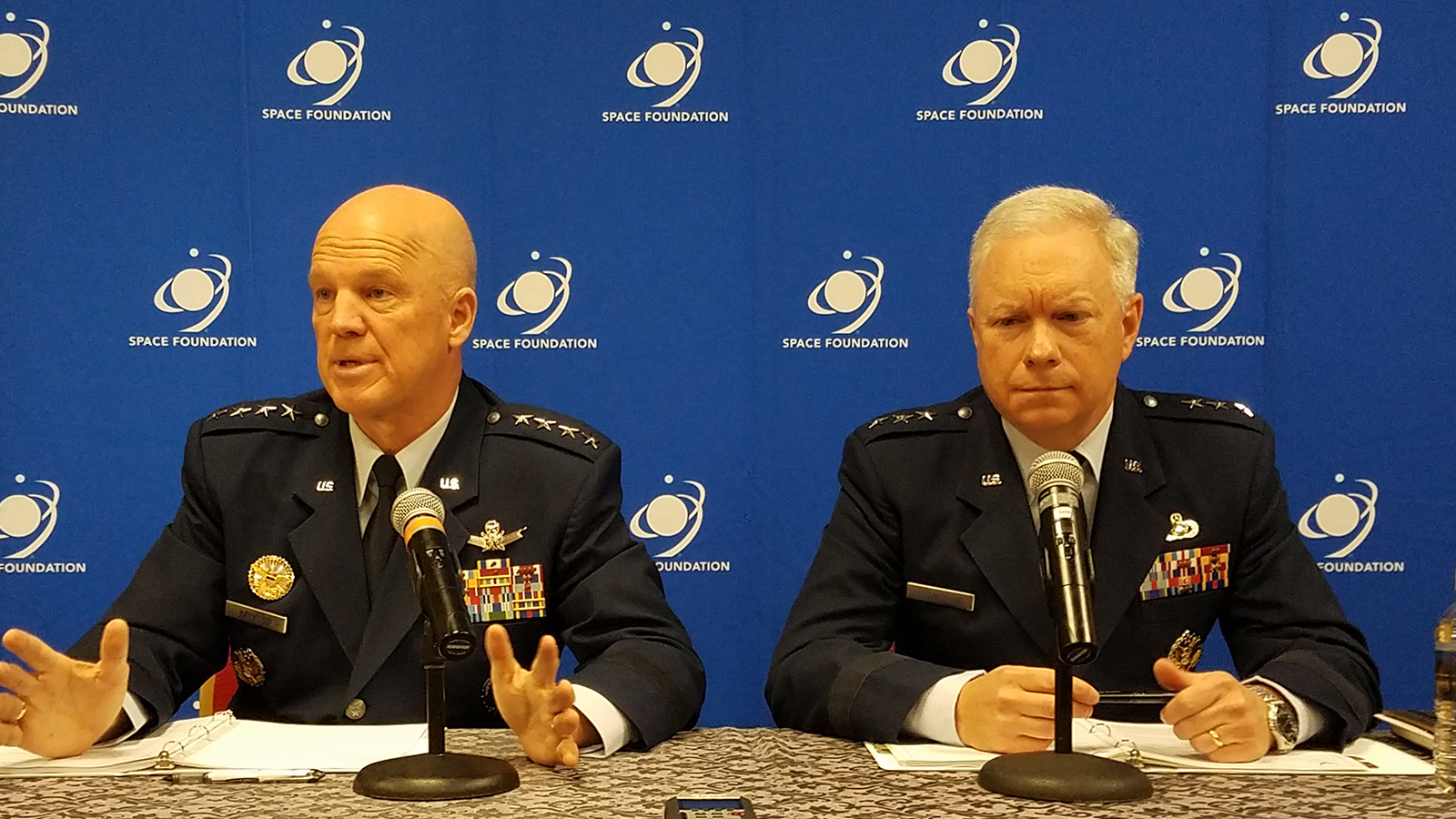Stay Up to Date
Submit your email address to receive the latest industry and Aerospace America news.
Acquisition of flagship satellite programs will remain unchanged for near future, general says
COLORADO SPRINGS, Colo. — The reorganization plan that the U.S. Air Force’s Space and Missile Systems Center intends to unveil in October will be targeted at delivering satellites faster, improving coordination with other agencies and opening minds to new technical approaches, the center’s commander told reporters at the Space Symposium.
There is one thing it won’t be about: “This is not a reorganization that involves any kind of downsizing or upsizing,” Lt. Gen. John Thompson, (right above) the commander of SMC, told reporters on Thursday during the Space Symposium.
Thompson said that he has a rough outline for the reorganization, but “we have so much redesign work to do” before October.
Reporters asked whether the changes could impact the center’s flagship satellite acquisition programs, including the Advanced Extremely High Frequency communications satellites, whose roles include providing secure communications for the president, and the Space-Based Infrared System missile-warning satellites. The final two satellites of the SBIRS program would be truncated in the Air Force’s budget request, and the reorganization is aimed at speeding the delivery of the next generation missile warning satellites that will be funded in their place.
“In the short term, I don’t think [the reorganization] will affect those large programs at all,” Thompson said.
“In the longer term, there may be possibilities to, for instance, use standardized buses either in LEO or GEO to take advantage of multiple different kinds of mission area capabilities on those same buses,” he added.
Air Force Secretary Heather Wilson announced the SMC reorganization on Tuesday during a speech at the symposium, when she said, “we must go faster in our drive to defendable space,” and said that Russia and China are researching ways to “disable our satellites.”
Gen. John Raymond, commander of Air Force Space Command, (left above) echoed Wilson on Thursday. “When historians look back at this year, they will view this as one of the most critical times in U.S. space security history,” Raymond said.
So far, SMC has decided that reorganization will include creation of an office of a chief architect, which Thompson said would be the chief technology officer, chief systems engineer and chief integrator within the center. The position will be based at Los Angeles Air Force Base to improve partnerships with companies, with the National Reconnaissance Office and th Air Force’s Rapid Capabilities Office to procure spacecraft faster.
“The conceptual work is largely done in terms of how we would like to do this,” he said. “Instead of automatically defaulting to go to very large, exquisite programs of record, we want to do more prototyping, demonstrations and experimentation.”
The Pentagon is also contracting with an as yet unidentified think tank at the direction of Congress to review matters of military space, including the possibility of establishing a Space Corps within the Air Force to boost military space expertise. Raymond said that study would be completed by August.
About Tom Risen
As our staff reporter from 2017-2018, Tom covered breaking news and wrote features. He has reported for U.S. News & World Report, Slate and Atlantic Media.
Related Posts
Stay Up to Date
Submit your email address to receive the latest industry and Aerospace America news.




